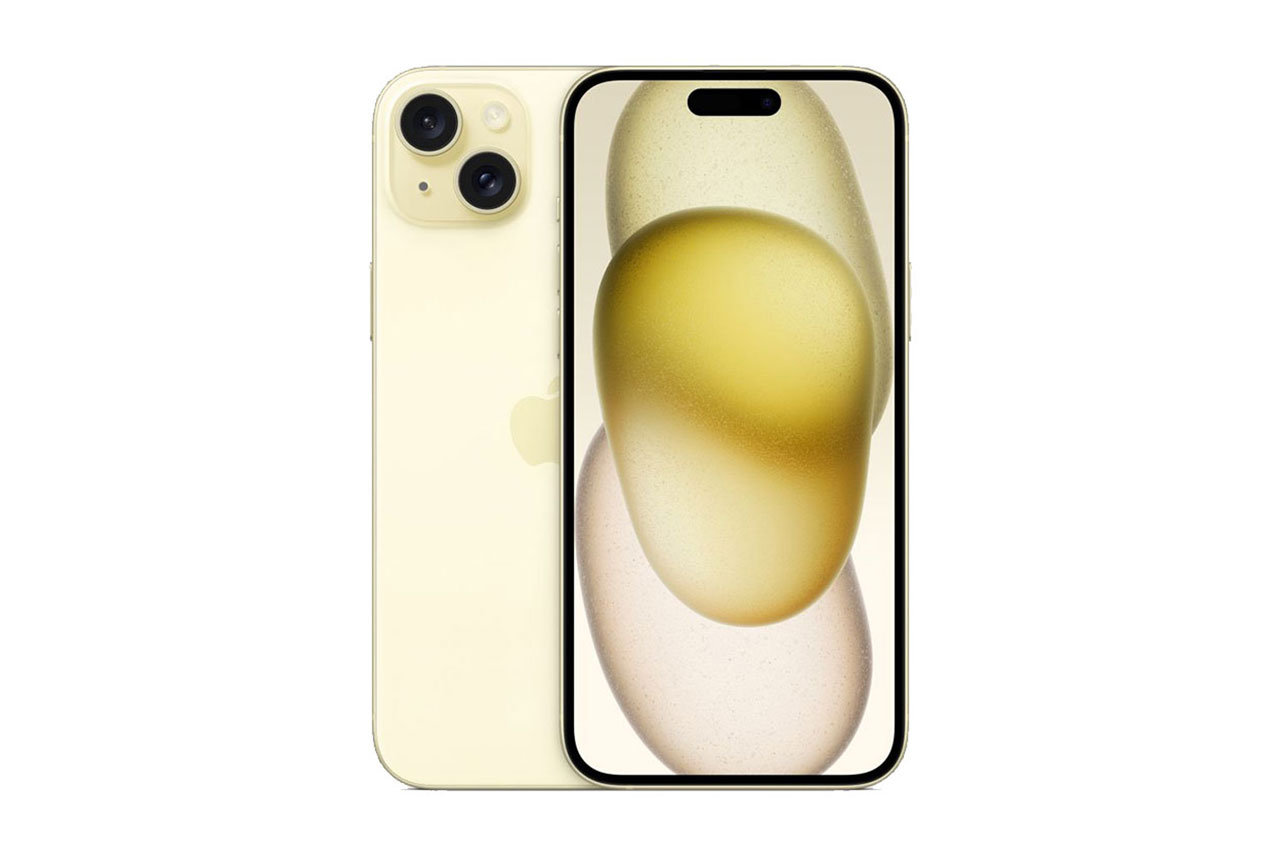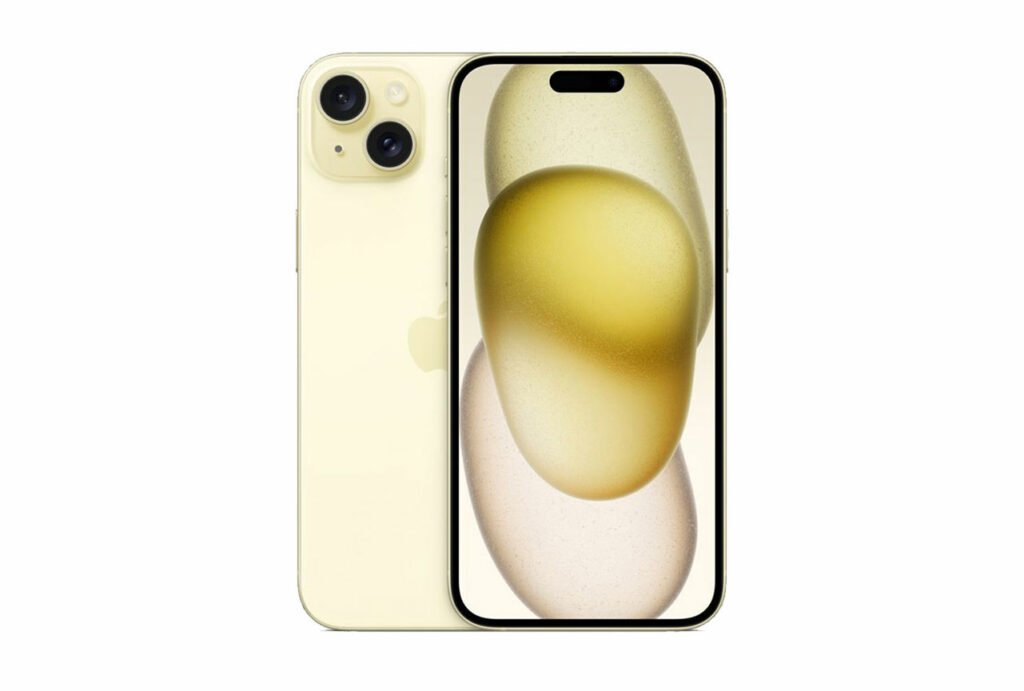The Apple iPhone 15 Plus and Apple iPhone 15 share the same rear camera specs, as well the same chipset, so as expected, the results of the Apple iPhone 15 Plus camera are exactly the same as those of the Apple iPhone 15.
We’ve included an example from our testing to show the similarities between these two models. But for a more in-depth look at the Apple iPhone 15 Plus’s rear camera photo and video performance, we direct you to the full test results of the Apple iPhone 15.
Overview
Key camera specifications:
- Primary:48 MP, f/1.6, 26mm (wide), Dual Pixel PDAF, sensor-shift OIS
- Ultra-wide: 12 MP, f/2.4, 13mm, 120˚ field of view
- A16 Bionic Chipset
Scoring
Sub-scores and attributes included in the calculations of the global score.
 Apple iPhone 15 Plus
Apple iPhone 15 Plus

145
camera
122
Apple iPhone 15 Pro
Best: Apple iPhone 15 Pro (123)
122
Apple iPhone 15 Pro Max
Best: Apple iPhone 15 Pro Max (125)
100
Huawei Mate 60 Pro+
Best: Huawei Mate 60 Pro+ (123)
113
Apple iPhone 15 Pro
Best: Apple iPhone 15 Pro (124)
97
Honor Magic5 Pro
Best: Honor Magic5 Pro (116)
75
Xiaomi Redmi 12 5G
Best: Xiaomi Redmi 12 5G (82)
84
Apple iPhone 14 Pro Max
Best: Apple iPhone 14 Pro Max (91)
84
Huawei P60 Pro
Best: Huawei P60 Pro (118)
90
Huawei Mate 60 Pro+
Best: Huawei Mate 60 Pro+ (121)
115
Apple iPhone 15 Pro
Best: Apple iPhone 15 Pro (116)
117
Apple iPhone 15 Pro
Best: Apple iPhone 15 Pro (119)
117
Huawei Mate 60 Pro+
Best: Huawei Mate 60 Pro+ (119)
107
Oppo Find X6 Pro
Best: Oppo Find X6 Pro (118)
117
Apple iPhone 15 Pro
Best: Apple iPhone 15 Pro (119)
84
Xiaomi 12S Ultra
Best: Xiaomi 12S Ultra (86)
117
Apple iPhone 15 Pro
Best: Apple iPhone 15 Pro (118)
Use cases & Conditions
Use case scores indicate the product performance in specific situations. They are not included in the overall score calculations.
Outdoor
Photos & videos shot in bright light conditions (≥1000 lux)
Indoor
Photos & videos shot in good lighting conditions (≥100lux)
Lowlight
Photos & videos shot in low lighting conditions (<100 lux)
Friends & Family
Portrait and group photo & videos
Position in Global Ranking

16
th
3. Apple iPhone 15 Pro Max
154
12. Honor Magic4 Ultimate
147
14. Apple iPhone 14 Pro Max
146
18. Samsung Galaxy S24 Ultra
144
20. Apple iPhone 13 Pro Max
141
23. Samsung Galaxy S23 Ultra (Snapdragon)
140
29. Vivo X80 Pro (Snapdragon)
137
33. Samsung Galaxy S22 Ultra (Snapdragon)
135
33. Vivo X80 Pro (MediaTek)
135
38. Samsung Galaxy S23 Plus (Snapdragon)
133
38. Samsung Galaxy S23 (Snapdragon)
133
44. Apple iPhone 12 Pro Max
131
44. Samsung Galaxy S22 Ultra (Exynos)
131
54. Samsung Galaxy Z Fold5
128
56. Asus Smartphone for Snapdragon Insiders
127
56. Samsung Galaxy Z Flip5
127
56. Samsung Galaxy S23 FE
127
61. Vivo X70 Pro (MediaTek)
126
65. Samsung Galaxy S22+ (Exynos)
125
69. Samsung Galaxy Z Fold4
124
72. Apple iPhone 11 Pro Max
122
77. Xiaomi Redmi Note 13 Pro Plus 5G
121
78. Samsung Galaxy Z Fold3 5G
120
78. Samsung Galaxy S22 (Exynos)
120
78. Xiaomi Redmi Note 13 Pro 5G
120
85. Samsung Galaxy S21 Ultra 5G (Snapdragon)
117
85. Samsung Galaxy S21 FE 5G (Snapdragon)
117
85. Samsung Galaxy S21 5G (Snapdragon)
117
91. Vivo X60 Pro 5G (Snapdragon)
116
94. Samsung Galaxy S21+ 5G (Snapdragon)
115
94. Samsung Galaxy S21 Ultra 5G (Exynos)
115
103. Xiaomi Redmi Note 12 Pro+ 5G
113
106. Samsung Galaxy Z Flip4
112
108. Samsung Galaxy Z Flip3 5G
111
108. Samsung Galaxy S21+ 5G (Exynos)
111
108. Samsung Galaxy S21 5G (Exynos)
111
113. Vivo X60 Pro 5G (Exynos)
108
117. Samsung Galaxy A54 5G
107
120. Motorola Edge 40 Neo
103
121. Xiaomi Redmi Note 12 Pro 5G
102
123. Motorola Edge 30 Pro
101
125. Apple iPhone SE (2022)
100
132. Samsung Galaxy A34 5G
92
132. Samsung Galaxy A25 5G
92
135. Xiaomi Redmi Note 13 5G
91
137. Samsung Galaxy A52s 5G
88
137. Samsung Galaxy A52 5G
88
139. Samsung Galaxy A33 5G
85
141. Samsung Galaxy A15 5G
83
143. Samsung Galaxy A15 LTE
81
144. Samsung Galaxy A53 5G
79
145. Xiaomi Redmi Note 11 Pro 5G
78
148. Xiaomi Redmi Note 13
75
150. Honor Magic5 Lite 5G
74
152. Honor Magic6 Lite (5300 mAh)
70
152. Samsung Galaxy A23 5G
70
154. Xiaomi Redmi Note 12 5G
69
157. Samsung Galaxy A14 5G
67
158. Motorola Moto G62 5G
66
159. Xiaomi Redmi Note 11S 5G
65
161. Xiaomi Redmi Note 12
63
165. Honor Magic4 Lite 5G
61
167. Xiaomi Redmi Note 11
60
173. Xiaomi Redmi 10 2022
51
175. Samsung Galaxy A22 5G
48
Position in Ultra-Premium Ranking

15
th
3. Apple iPhone 15 Pro Max
154
11. Honor Magic4 Ultimate
147
13. Apple iPhone 14 Pro Max
146
16. Samsung Galaxy S24 Ultra
144
18. Apple iPhone 13 Pro Max
141
21. Samsung Galaxy S23 Ultra (Snapdragon)
140
25. Vivo X80 Pro (Snapdragon)
137
29. Samsung Galaxy S22 Ultra (Snapdragon)
135
29. Vivo X80 Pro (MediaTek)
135
34. Samsung Galaxy S23 Plus (Snapdragon)
133
37. Apple iPhone 12 Pro Max
131
37. Samsung Galaxy S22 Ultra (Exynos)
131
44. Samsung Galaxy Z Fold5
128
46. Asus Smartphone for Snapdragon Insiders
127
46. Samsung Galaxy Z Flip5
127
51. Samsung Galaxy S22+ (Exynos)
125
53. Samsung Galaxy Z Fold4
124
55. Apple iPhone 11 Pro Max
122
58. Samsung Galaxy Z Fold3 5G
120
63. Samsung Galaxy S21 Ultra 5G (Snapdragon)
117
65. Samsung Galaxy S21+ 5G (Snapdragon)
115
65. Samsung Galaxy S21 Ultra 5G (Exynos)
115
70. Samsung Galaxy Z Flip4
112
71. Samsung Galaxy Z Flip3 5G
111
71. Samsung Galaxy S21+ 5G (Exynos)
111
Pros
- Vivid brightness and contrast when photos and videos are viewed on HDR display
- Pleasant and natural color rendering and skin tones especially in bright light, for photos and videos
- Accurate depth estimation and efficient fine details segmentation in portrait mode
- Low level of noise on videos
- Effective video stabilization
- Smooth zooming experience on preview
Cons
- High level of photo noise, particularly in dark areas
- Fairly limited zooming capabilities
- Slightly limited dynamic range in photos and video
- Fine details are sometimes lost in low-light videos
- Artifacts, including flare, moving texture (low light), and aliasing
DXOMARK CHART (DMC) detail preservation score vs lux levels for tripod and handheld conditions
This graph shows the evolution of the DMC detail preservation score with the level of lux, for two holding conditions. DMC detail preservation score is derived from an AI-based metric trained to evaluate texture and details rendering on a selection of crops of our DXOMARK chart.



 16th
16th
 15th
15th






DXOMARK encourages its readers to share comments on the articles. To read or post comments, Disqus cookies are required. Change your Cookies Preferences and read more about our Comment Policy.